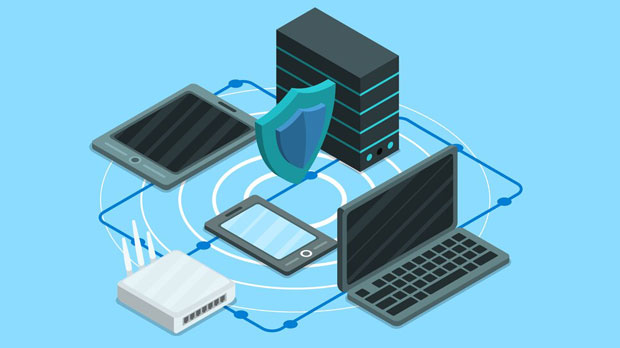The internet has become an essential tool in our daily lives, and with it, the need for privacy and unrestricted access to content has risen. While traditional VPNs (Virtual Private Networks) have long been used to bypass geo-restrictions and safeguard online privacy, newer technologies like PYPROXY have emerged, offering an alternative way to unlock websites like Tamilmv. But what sets pyproxy apart from traditional VPNs? In this article, we will explore how pyproxy operates differently and discuss its advantages over VPNs, focusing on aspects such as speed, anonymity, and flexibility. Introduction to pyproxy and Traditional VPNsBoth pyproxy and traditional VPNs aim to provide users with unrestricted access to the internet, bypassing regional content blocks, and ensuring online privacy. However, their methodologies differ significantly, influencing the user experience. To understand how pyproxy improves upon the traditional VPN model, it is crucial to first understand how each of these tools functions. Traditional VPNsA VPN creates a secure tunnel between the user’s device and the internet. It routes traffic through a server located in a different country, masking the user’s IP address and encrypting data. This process can bypass geo-restrictions, enabling users to access content that may be blocked in their region. However, VPNs can slow down internet speed due to the encryption process and the distance between the user and the server. pyproxy: A New AlternativePyproxy, on the other hand, is a proxy-based solution designed to unlock content without using traditional VPN methods. It uses a more lightweight approach, typically relying on proxy servers that act as intermediaries between the user and the target website. By handling requests more efficiently, pyproxy minimizes the load on a user’s device and provides faster access compared to a VPN. Speed: The Key Advantage of pyproxyOne of the most significant advantages of pyproxy over traditional VPNs is speed. When you use a VPN, your internet traffic is routed through an encrypted tunnel, which often leads to a noticeable reduction in browsing speed. The longer the distance between the user and the VPN server, the slower the connection will be.With pyproxy, the process is more streamlined. Since it is not relying on full encryption and tunneling, the proxy-based system results in faster load times. This is especially useful when accessing content-heavy websites like Tamilmv, where quick access to video streaming or downloads is essential. Privacy and Anonymity: Strengths of Both, but with Key DifferencesBoth pyproxy and VPNs offer a level of anonymity, but in different ways. Traditional VPNs provide a high level of encryption and ensure that your real IP address is hidden. This makes it more difficult for websites to track or identify users. VPNs also protect users from various forms of surveillance, including ISPs (Internet Service Providers) and government agencies.On the other hand, pyproxy, while providing basic anonymity by masking the user’s IP address, does not necessarily offer the same level of encryption as a VPN. However, for users who are primarily concerned with unblocking content rather than total privacy, pyproxy can be a more efficient solution.It is important to note that, while pyproxy can unlock content effectively, users who require high-level anonymity (e.g., journalists, activists, etc.) might still prefer a traditional VPN due to its stronger privacy features. Flexibility and Ease of UseAnother advantage of pyproxy is its simplicity and ease of use. Setting up a traditional VPN often requires downloading software, configuring settings, and sometimes troubleshooting connection issues. For some users, these steps can be daunting, especially if they are not tech-savvy.In contrast, pyproxy typically operates via a web-based interface, which is easier to use and does not require any installation. It can be accessed directly from the browser, which makes it more convenient for users who need a quick solution without the hassle of software configuration.Moreover, pyproxy can often be used on a wider variety of devices, including smartphones, tablets, and other web-enabled gadgets. VPNs, on the other hand, may require dedicated apps for different platforms, and some may have compatibility issues with certain devices or operating systems. Reliability and StabilityWhen it comes to reliability, traditional VPNs generally have the advantage. VPNs are well-established and have a reputation for stability, particularly with premium services. They offer multiple server options and a dedicated customer support team to handle any issues that arise.Pyproxy, however, may not always offer the same level of support or reliability, especially if the service is free or operates with limited resources. Free proxy services are often more prone to outages or instability. However, for users looking for a temporary or less expensive solution, pyproxy can be a reliable choice, especially if uptime is not a critical factor. Security Considerations: Which is Safer?Security is a major concern for any online activity, and both pyproxy and VPNs offer different levels of protection. VPNs typically encrypt your internet traffic, which prevents third parties from intercepting or monitoring your activity. This makes VPNs more secure for activities like online banking or shopping, where sensitive information is exchanged.Pyproxy, on the other hand, provides minimal encryption. While this is sufficient for unblocking content, it may not be ideal for users who need to protect sensitive data or engage in activities that require high security. For simple web browsing or streaming, pyproxy is generally safe. However, for more secure activities, users may still need the robust protection that a traditional VPN offers. Cost Comparison: Pyproxy vs. VPNsCost is another factor that sets pyproxy apart from traditional VPNs. Many VPN services require a monthly subscription, and premium options can be quite expensive. In contrast, pyproxy is often available as a free or low-cost service, making it a more affordable option for casual users who want to access specific content without paying for a full VPN subscription.However, while free services might be tempting, they often come with limitations, such as slower speeds, less stability, or data restrictions. Premium VPNs, on the other hand, offer a more consistent experience, especially for users who require constant access to restricted content. Conclusion: Which Should You Choose?Ultimately, the choice between pyproxy and a traditional VPN depends on your specific needs and priorities. If speed, simplicity, and cost are the primary considerations, pyproxy offers an attractive alternative to traditional VPNs. It provides a faster, more user-friendly experience, especially for users looking to unlock specific sites like Tamilmv.
Oct 26, 2025



































































